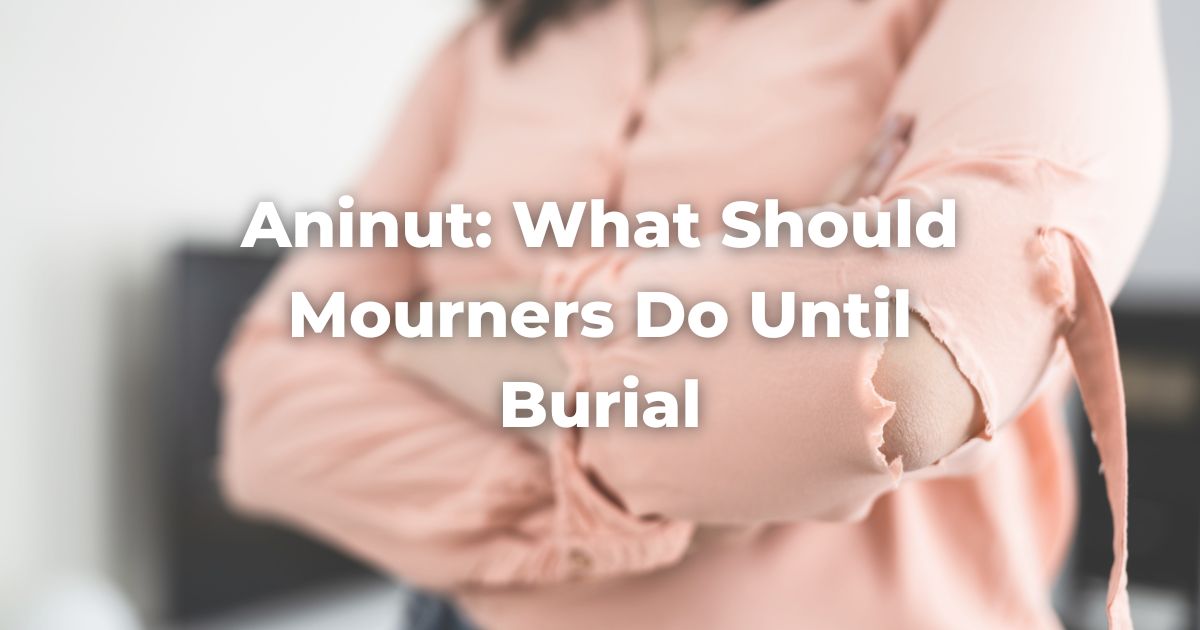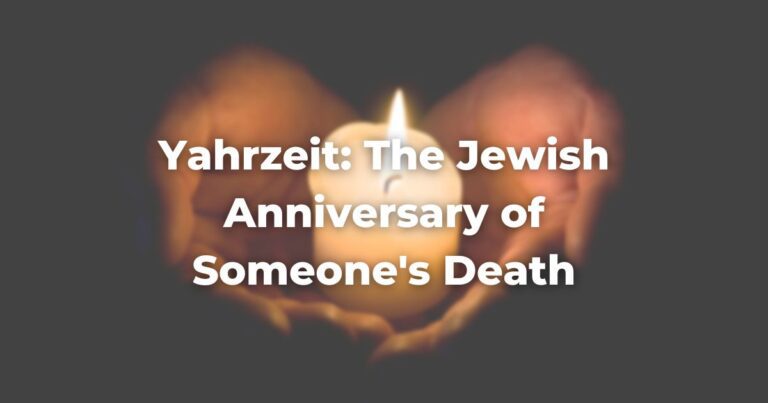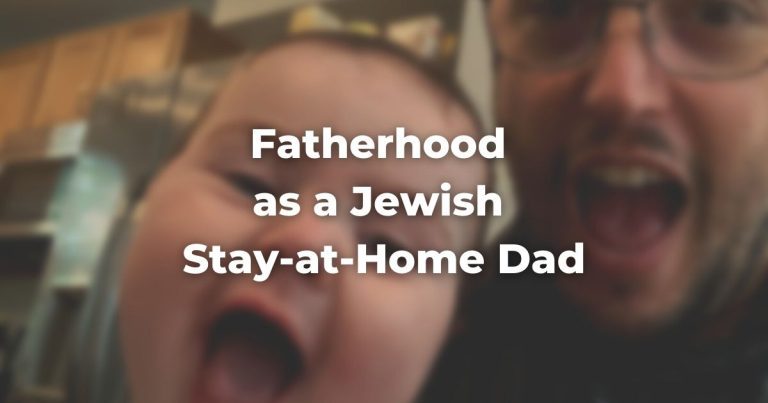What to do During Aninut
The period from the time of death until burial is known as aninut.
This term has no exact English translation, and the mourners—or rather, those who will become mourners after the burial, i.e., the parents, siblings, spouse, and children of the decedent—during this initial stage of bereavement are called on’nim (singular: onen or onenet).
Because these close relatives of the deceased are generally supposed to be charged with arranging the funeral and subsequent burial of the deceased, the halakhah exempts them from the performance of all positive mitzvot. The tradition finding it in poor taste for people who have suffered the loss of such a close family member to be overly concerned with their own spiritual needs.
Many people turn to the synagogue for solace during this period. However, it is considered inappropriate to recite the Mourner’s Kaddish until after the burial takes place.
In addition, on’nim (relatives observing aninut) should refrain from eating meat, drinking wine, or enjoying other obvious physical pleasures.
The Practice of Kriyah
When death occurs, the immediate relations of the deceased are required to tear a garment before burial.
The act of tearing a garment, called kriyah (k’ri·ah) in Hebrew, is an ancient expression of grief that repeatedly appears in the biblical narrative. It symbolizes how one’s heart can be torn by the loss of such a close relative. (Cf., for example, the stories regarding Jacob at Genesis 37:34, Joshua at Joshua 7:6, and King David at 2 Samuel 1:11 or 2 Samuel 13:31.)
Once a spontaneous response to grief, today this is done by mourners at the funeral chapel before the funeral begins.
Many now prefer to rip small black ribbons instead of actual garments. They then to wear those ribbons throughout the week of mourning. (Any rent garments must be worn throughout the shivah week.)
While this practice is technically acceptable, it lacks the immediacy of tearing an actual garment and can rarely provide the cathartic, physical release that comes from tearing one’s clothing.
One is required to perform kriyah for one’s parents, children, spouse, and siblings (Shulchan Arukh, Yoreh Deah 340:1).
The mourner should be standing when kriyah is performed and the tear should be made on one’s right side unless one has suffered the loss of a parent. In that case, the tear or torn ribbon is worn, on the left side, directly over the heart.
One should make the tear oneself. Even if it is started by someone else, it should be completed by the mourner as a personal expression of grief.
Before kriyah, a blessing is recited in which God is acknowledged as the just and true Judge of the world. After kriyah, some recite Job 1:21: adonai natan vadonai lakaḥ /y’hi sheim adonai m’vorakh (“The Eternal has given and the Eternal has taken away; praised be the name of the Eternal One”).
Except on Shabbat, the torn clothing or ribbon is worn for the entire week of mourning.
After the secondary mourning period of thirty days for a sibling, spouse, or child, the clothing may be mended and worn again if so desired.
The tear made after a parent’s death, however, may not be mended (Shulchan Arukh, Yoreh Deah 340:15).
Though there is a tradition posthumously to circumcise a baby boy who dies before his eighth day of life (Shulchan Arukh, Yoreh Deah 263:5), Rabbi Isaac Klein, observing that Maimonides fails even to mention this custom in passing, recommends that we not do so and this would surely be the approach of most Conservative rabbis today.
Adapted with permission from The Observant Life.
Authors
-

-



The Observant Life: The Wisdom of Conservative Judaism for Contemporary Jews distills a century of thoughtful inquiry into the most profound of all Jewish questions: how to suffuse life with timeless values, how to remain loyal to the covenant that binds the Jewish people and the God of Israel, and how to embrace the law while retaining an abiding sense of fidelity to one’s own moral path in life. Written in a multiplicity of voices inspired by a common vision, the authors of The Observant Life explain what it means in the ultimate sense to live a Jewish life, and to live it honestly, morally, and purposefully. The work is a comprehensive guide to life in the 21st Century. Chapters on Jewish rituals including prayer, holiday, life cycle events and Jewish ethics such as citizenship, slander, taxes, wills, the courts, the work place and so much more.
View all posts





